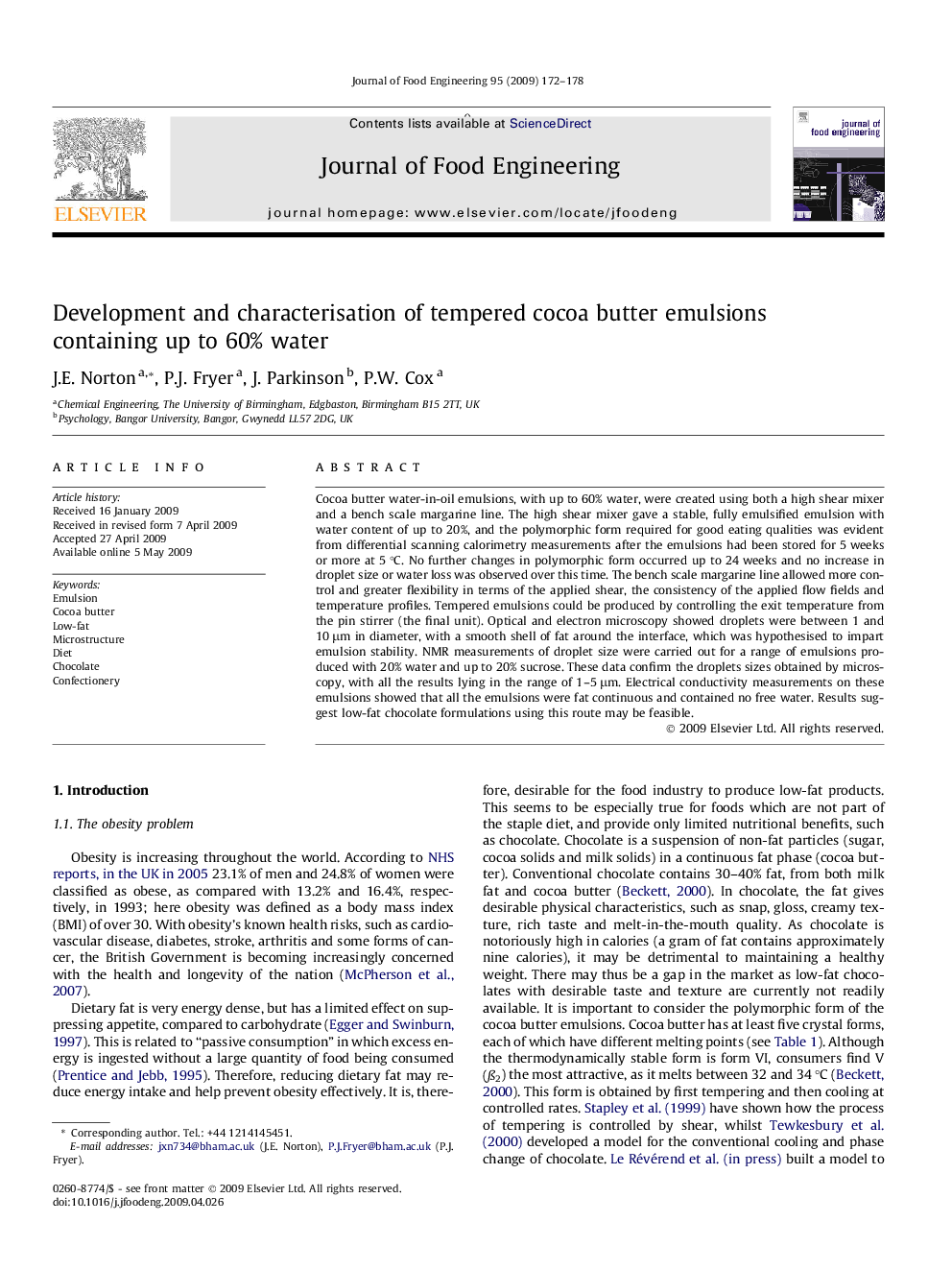| Article ID | Journal | Published Year | Pages | File Type |
|---|---|---|---|---|
| 224800 | Journal of Food Engineering | 2009 | 7 Pages |
Cocoa butter water-in-oil emulsions, with up to 60% water, were created using both a high shear mixer and a bench scale margarine line. The high shear mixer gave a stable, fully emulsified emulsion with water content of up to 20%, and the polymorphic form required for good eating qualities was evident from differential scanning calorimetry measurements after the emulsions had been stored for 5 weeks or more at 5 °C. No further changes in polymorphic form occurred up to 24 weeks and no increase in droplet size or water loss was observed over this time. The bench scale margarine line allowed more control and greater flexibility in terms of the applied shear, the consistency of the applied flow fields and temperature profiles. Tempered emulsions could be produced by controlling the exit temperature from the pin stirrer (the final unit). Optical and electron microscopy showed droplets were between 1 and 10 μm in diameter, with a smooth shell of fat around the interface, which was hypothesised to impart emulsion stability. NMR measurements of droplet size were carried out for a range of emulsions produced with 20% water and up to 20% sucrose. These data confirm the droplets sizes obtained by microscopy, with all the results lying in the range of 1–5 μm. Electrical conductivity measurements on these emulsions showed that all the emulsions were fat continuous and contained no free water. Results suggest low-fat chocolate formulations using this route may be feasible.
